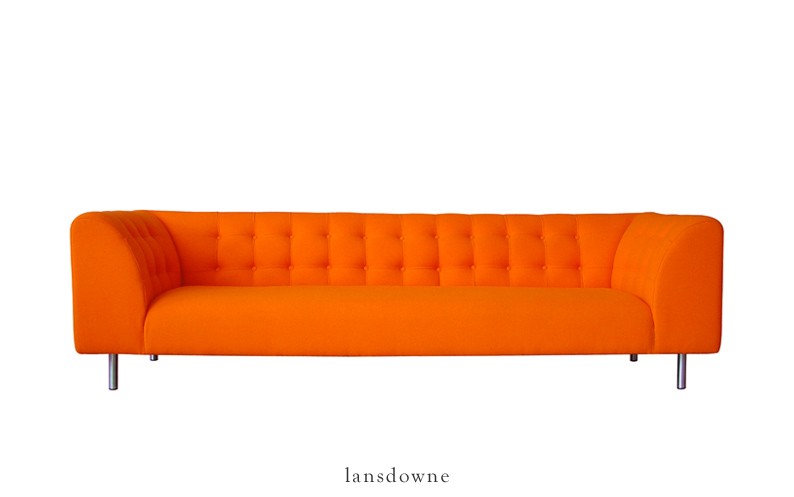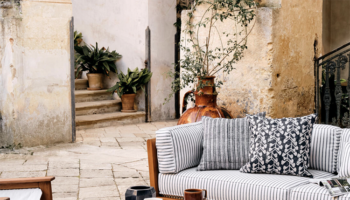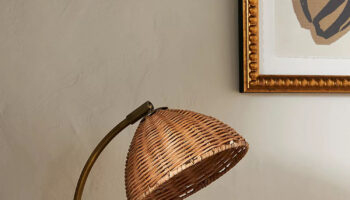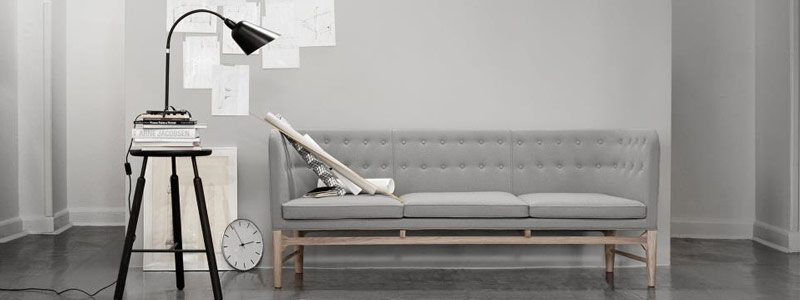
There’s nothing like a cold winter evening when you want to snuggle up in front of the telly with a good film to make you realise that your sofa is, well, frankly past its best.
It can be a combination of things; simple old age both you and it. After all, sinking into a low sofa in your 20s is not the same as trying to get back up out of it in your 60s. It might have finally succombed to years of small children jumping up and down on it and hurling cups of ribena about. Or even red wine – presumably you not them.
So it’s time to think again. And given that buying a sofa is a major investment which means that you will have to like it for a long time, mad about the house brings you some helpful advice on buying sofas and some suggestions of what’s about this season.
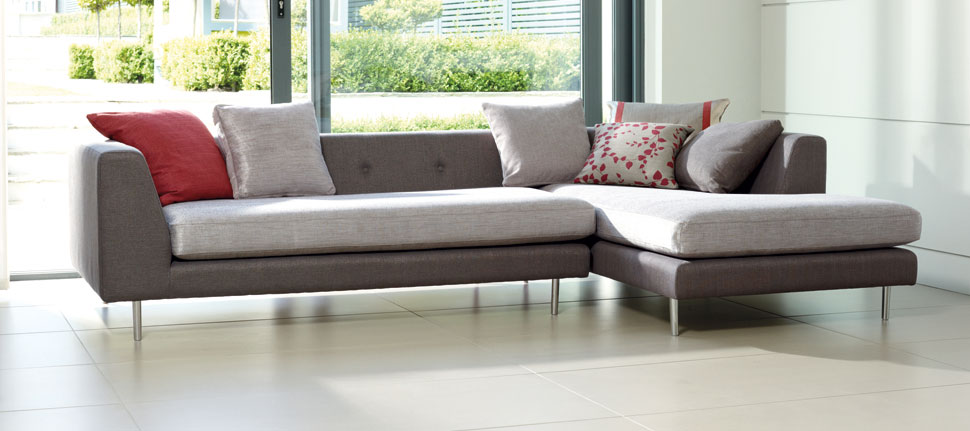
WHAT SORT OF CUSHIONS SHOULD I CHOOSE?
A cheaper sofa may well have cushions made from polyeurathane foam which is easy to care for but it won’t last terribly long and can feel hard after a while. Polyester fibre is cheap but goes flat quickly. You may be persuaded to go for goose and duck feathers, which give that fabulously luxurious comfy sofa look, but bear in mind you will need to plump the cushions up every day and after a while they will bunch together creating hard lumps. Try a mix of goose feathers and down. You’ll still have to plump but you shouldn’t get the clump.
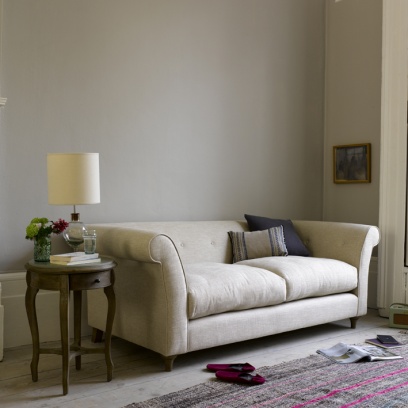
Paul Staden, of Sofa Workshop, suggests fibre is the best solution. “Many people find foam too springy. Fibre is softer than foam and firmer than feather but doesn’t require the same level of care and maintenance.
“But do bear in mind that comfort is extremely subjective,” he adds. “There is nothing like sitting on a sofa and testing different styles before making your decision. Remember all sofas will feel comfortable after a long day pounding the high street.”
Andrew Cussins, the managing director of Sofas and Stuff, says you should turn the cushions on a weekly basis which will help your sofa last a long time.
He also says that while velvet is a luxurious grown up fabric, try crushed velvet or chenille, both of which are more hard wearing.
SHOULD I HAVE LOOSE OR FIXED COVERS?
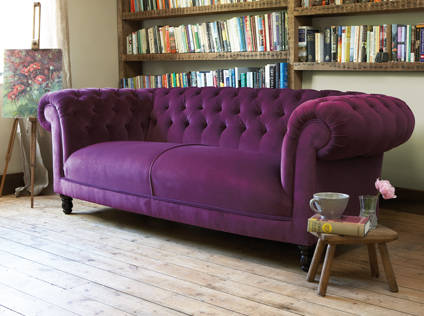
You may associate loose covers with your Granny and feel slightly horrified at the idea. Staden suggests you think again as they offer a version which attaches with velcro and gives the look of a fixed cover.
On the other hand, if you buy (or can afford) two sets of loose covers you can change the look seasonally. Go for warm rich chocolate and berry colours for winter and palers shades in summer. Or different shades of grey, which would probably always be my personal choice.
If you have a fixed cover, you can always change the cushions to suit your mood and the seasons.
HOW MUCH SHOULD I SPEND?
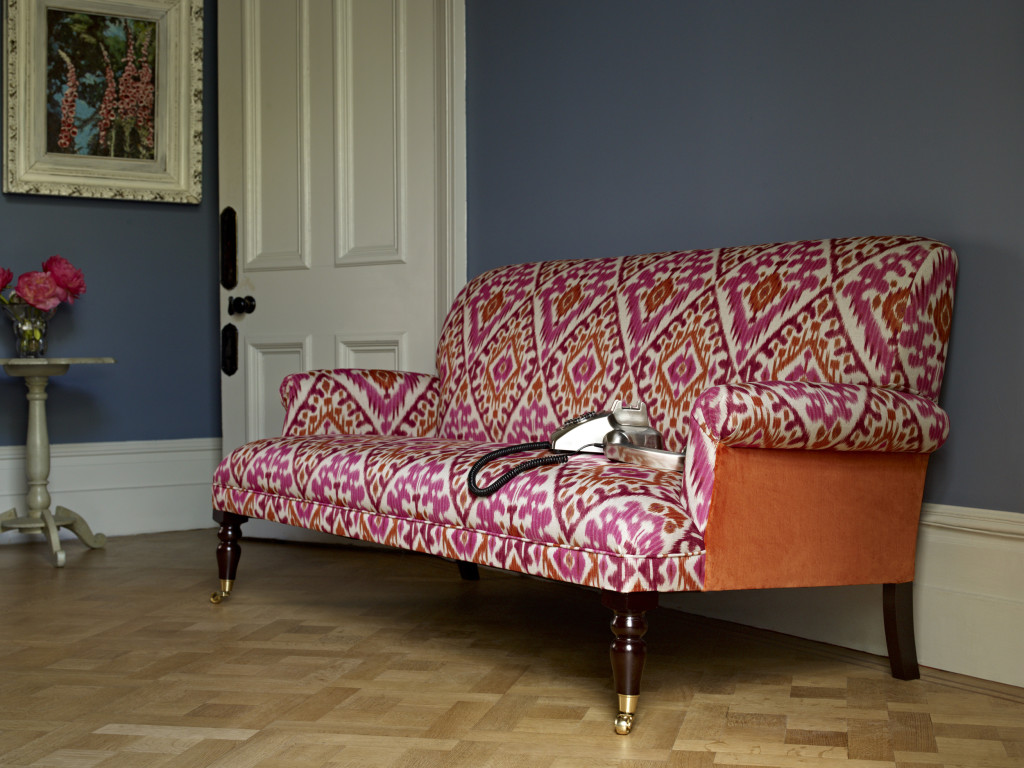
I know, I know, how long is a piece of string? I’m just sharing this from Staden with you, which seems to make sense: “Although lots of retailers are offering huge and very tempting discounts, you need to know how, where and with what the sofa is made. Under a £1000 and the sofa will not be as good quality, although you should still expect value for money with a guaranteed frame. For over £1000 the scale of the sofa will be greater, and so should the quality, with better fabrics and more substantial components. You need to consider if you want the sofa to last for years and be passed on to your kids, or if you’re happy to replace it after a few years.”
Many of these sofas haven’t included their prices and that is because these days you often choose the frame and then decide on a material that you like and companies are reluctant to commit to a vague idea of a price when there are so many variables. We looked at some sofa styles here and will return to more exact models in later posts.
WHAT SHOULD THE FRAME BE MADE FROM?

Pine is cheap wood and it may well go after about five years so you should really be looking for a hardwood frame such as beech or birch. To test the strength of the frame you can try lifting one corner about six inches off the floor. The leg should lift too; if it doesn’t there may be too much “give” in the frame and it’s too weak.
Staden says: “Beech and birch both grow slowly which gives them real strength. They don’t have many branches which means fewer knots which can weaken the finished product. But bear in mind, it’s unlikely you’ll get a sofa with a traditional frame for less than £1500 as they need to be glued and dowelled and also screwed to give the joints great strength and longevity”
AND FINALLY
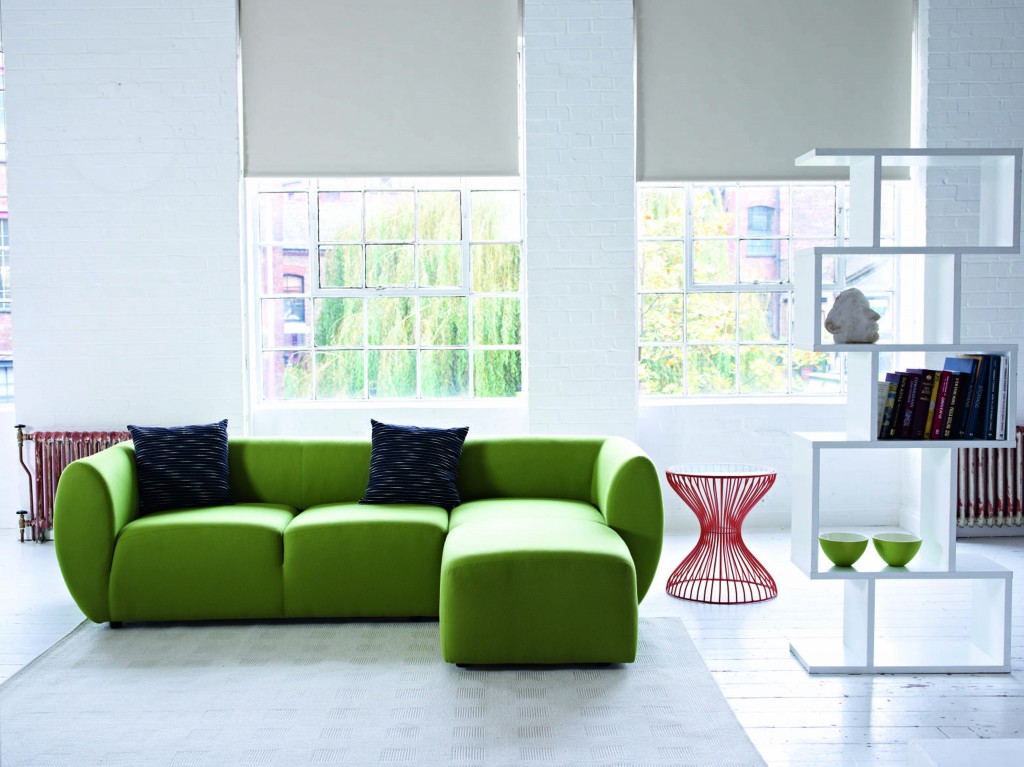
Measure your doors and windows as well as the space where the sofa is going to sit. It might sound obvious but speaking as someone who didn’t, I feel I can pass that on. Not only did my kitchen table have to go out through my sitting room window, in through the neighbours and over the fence into the back garden to reach the kitchen (we forgot to measure the kitchen corridor) but those awfully nice men from Habitat once spent two hours trying to deliver a sofa through a door that was too narrow. They ended up having to remove the non-removeable legs. It was either that or the door frame.
These days a lot of sofas come with removeable arms and legs. Remember it’s harder to bend a high-back sofa round a door than a low back one.
